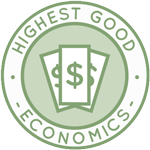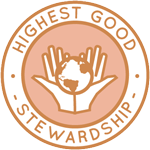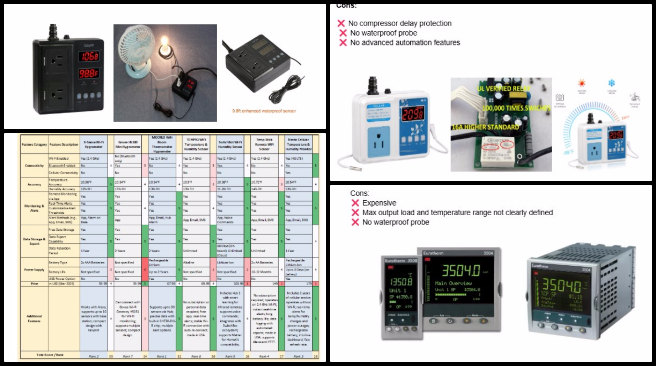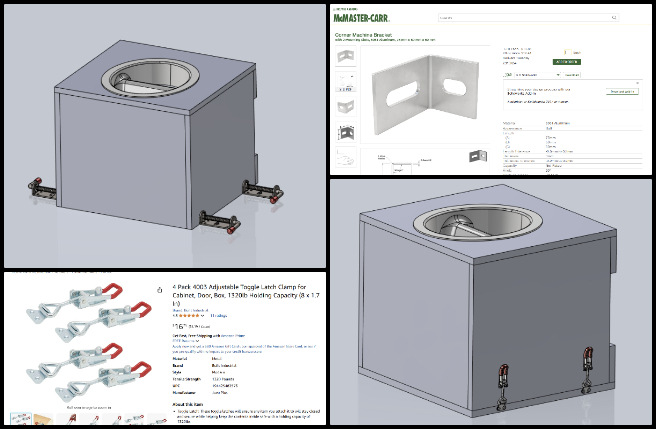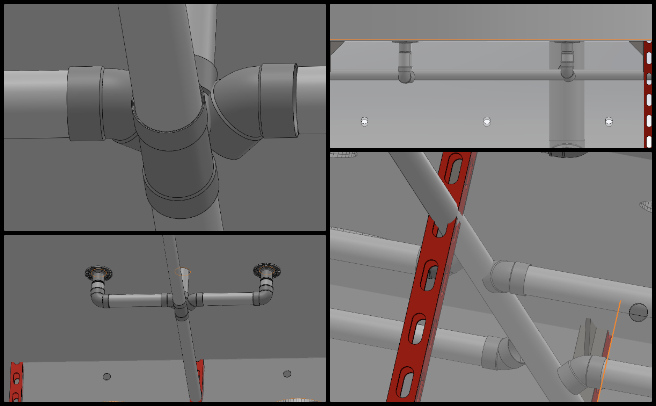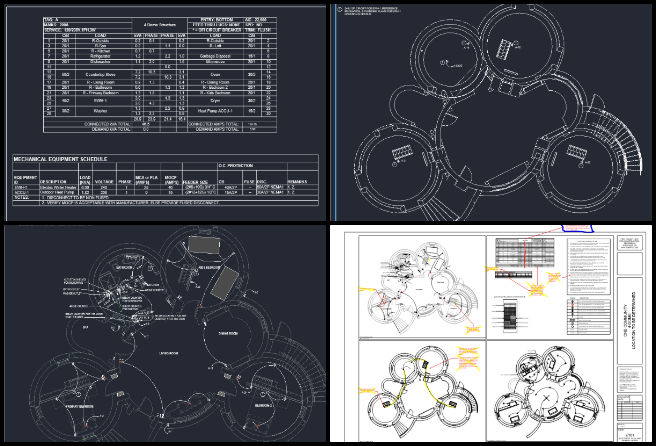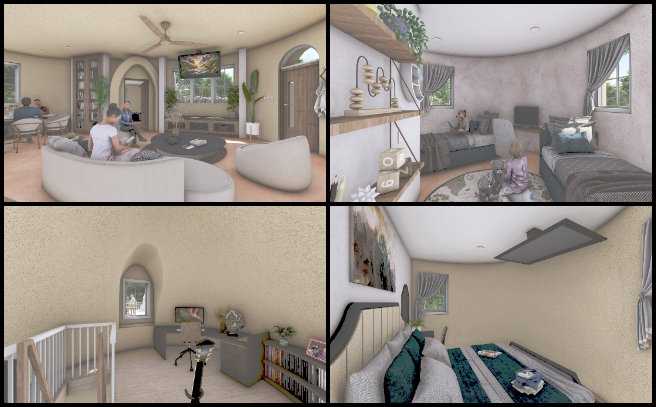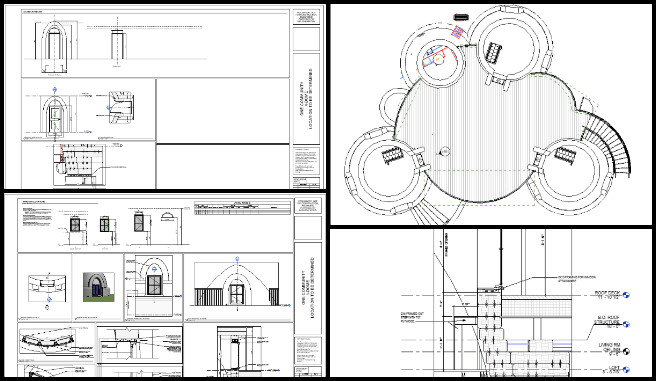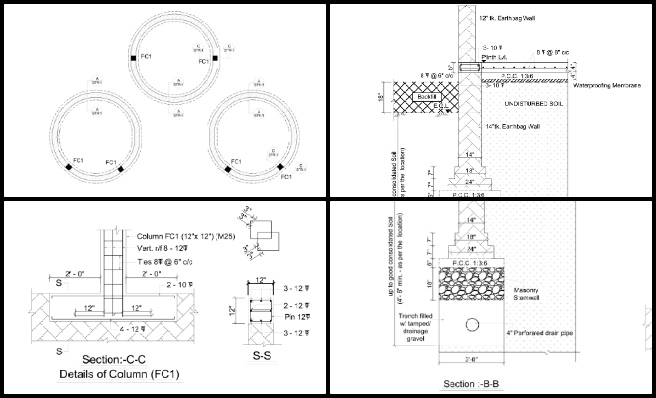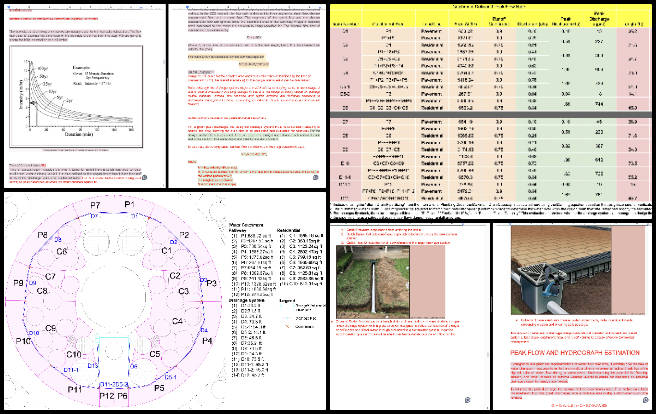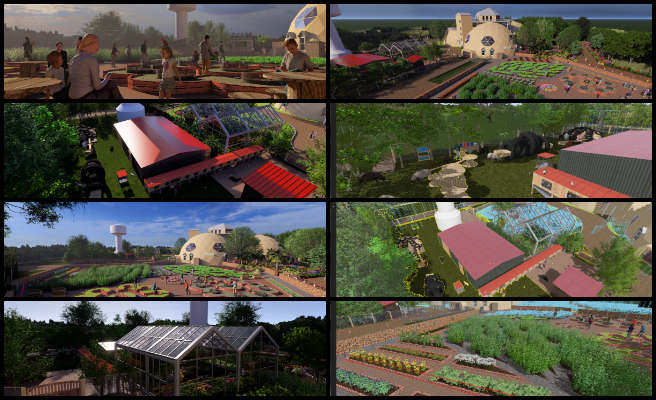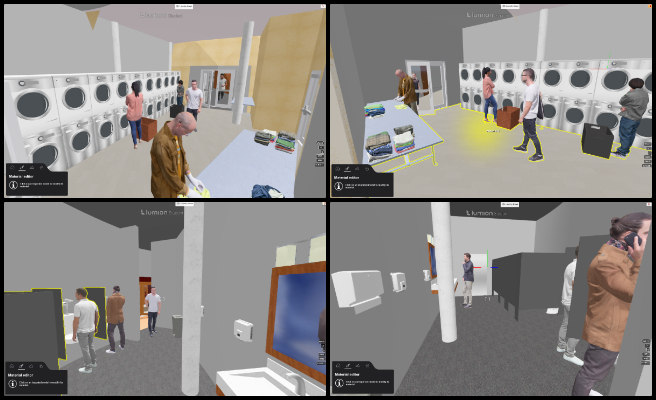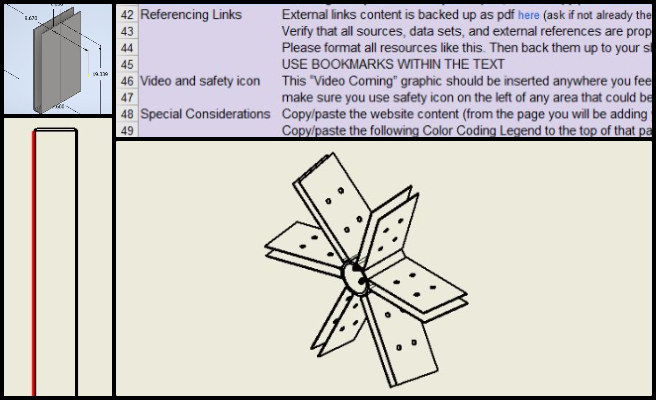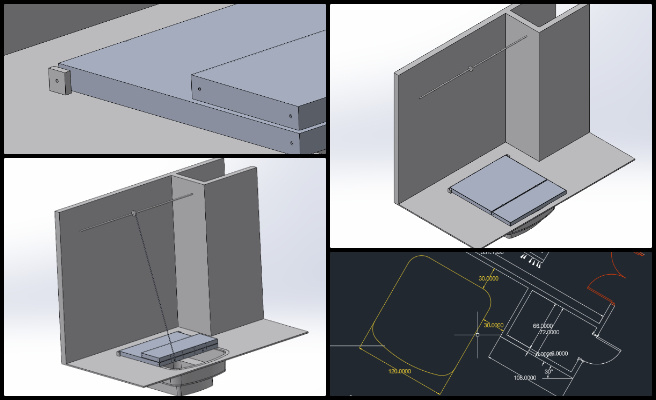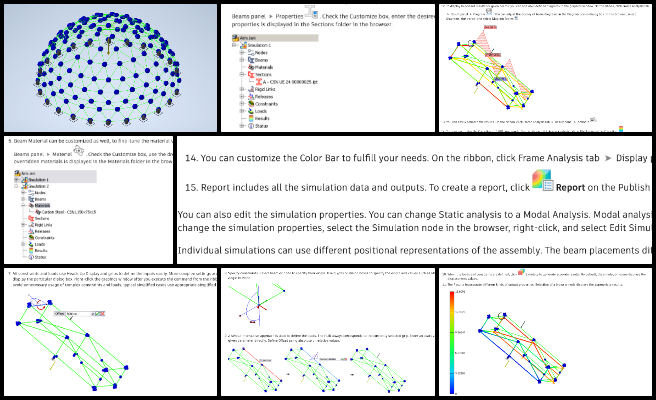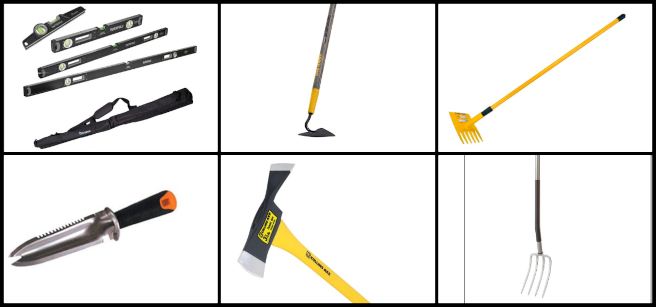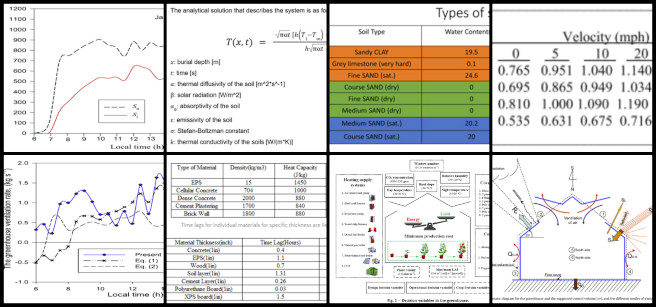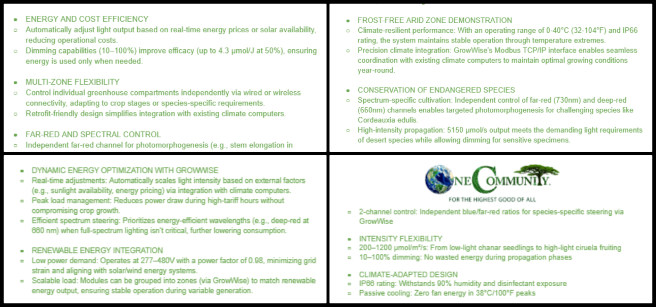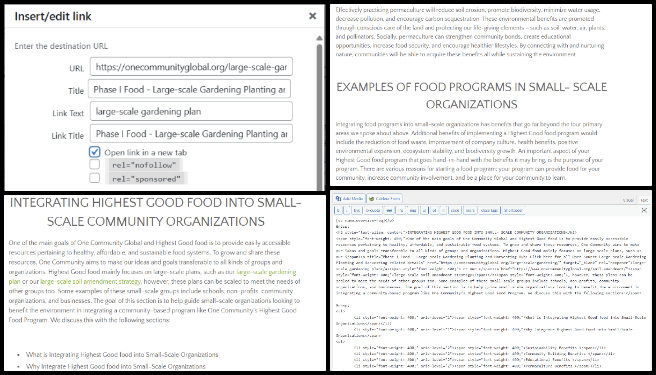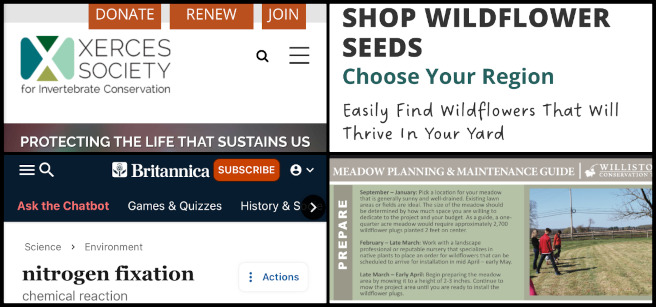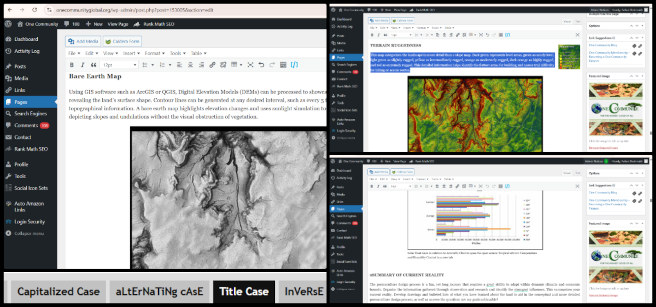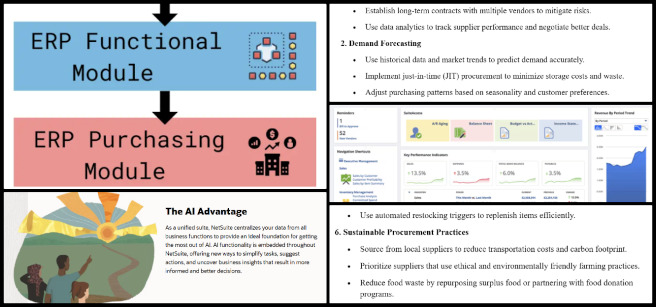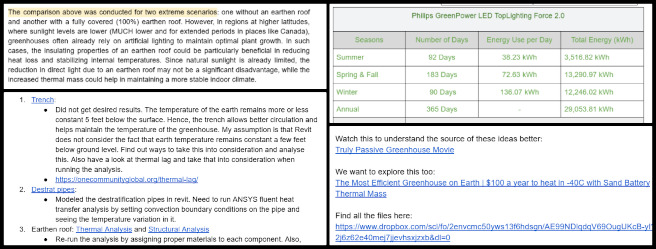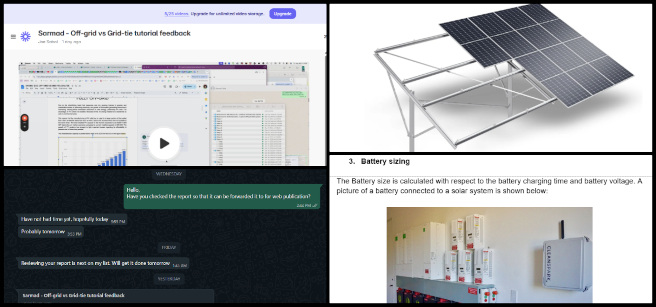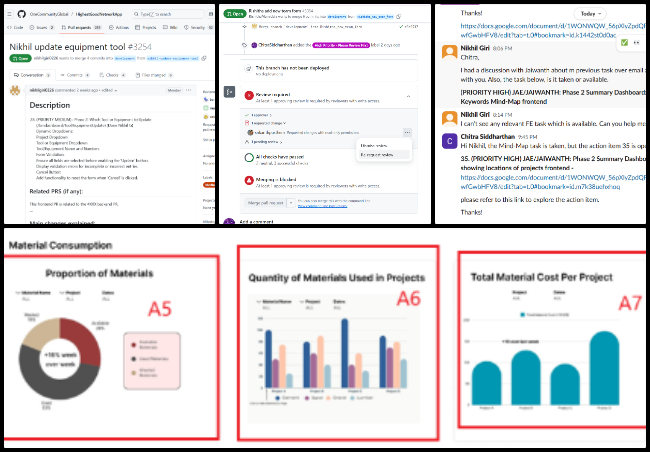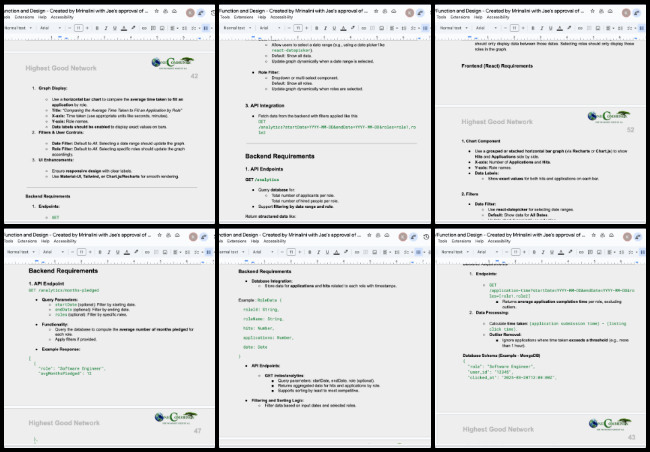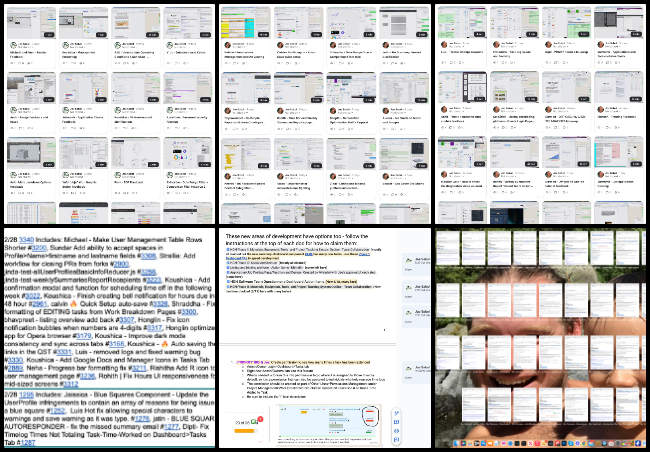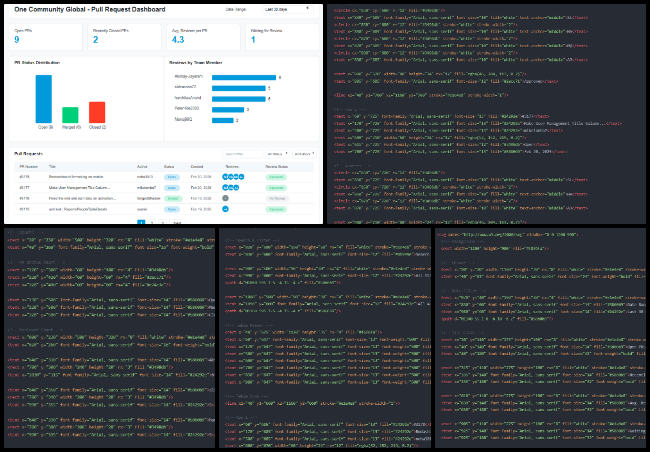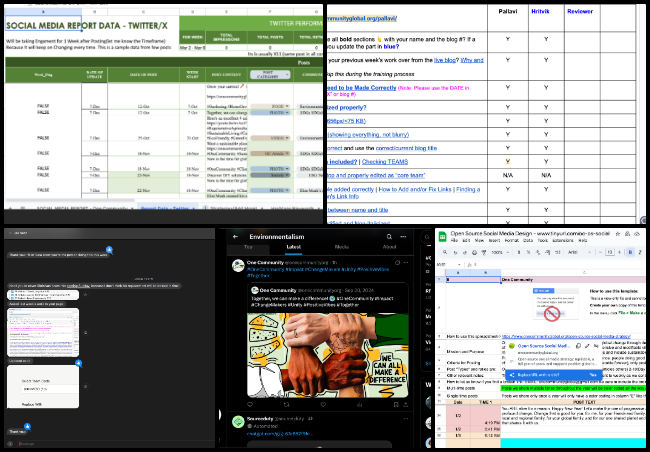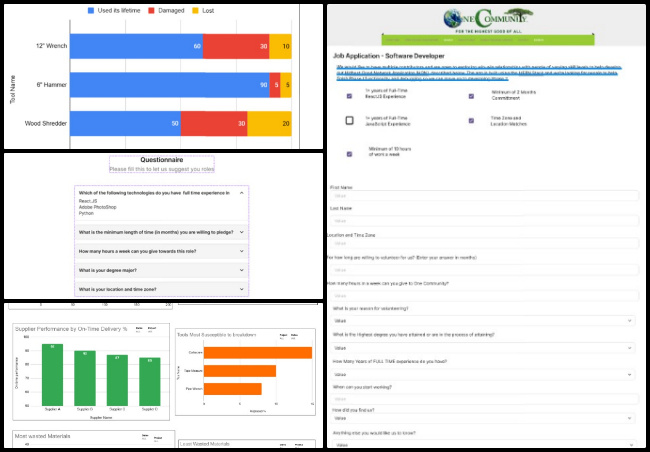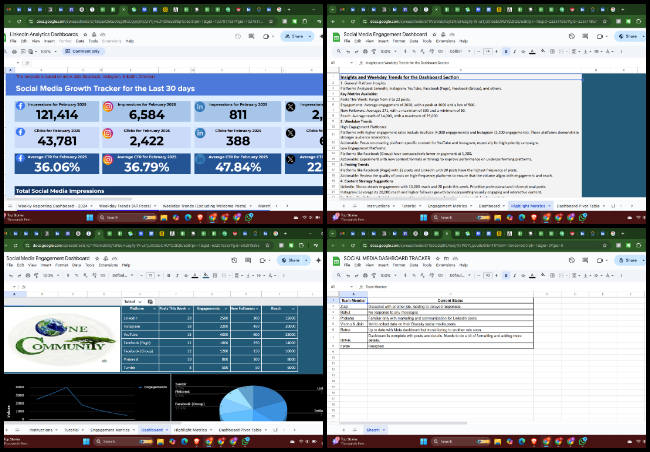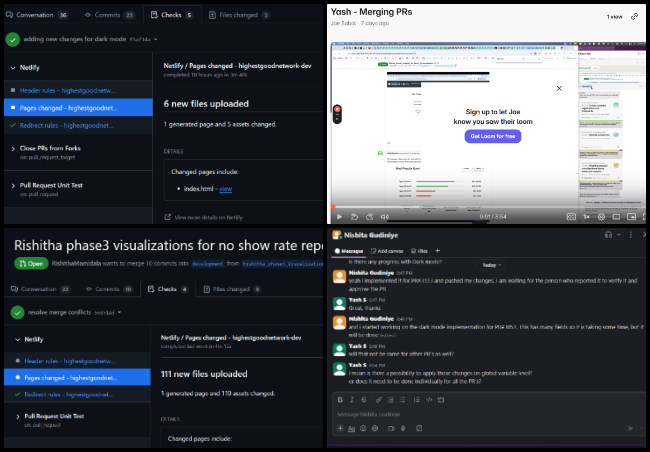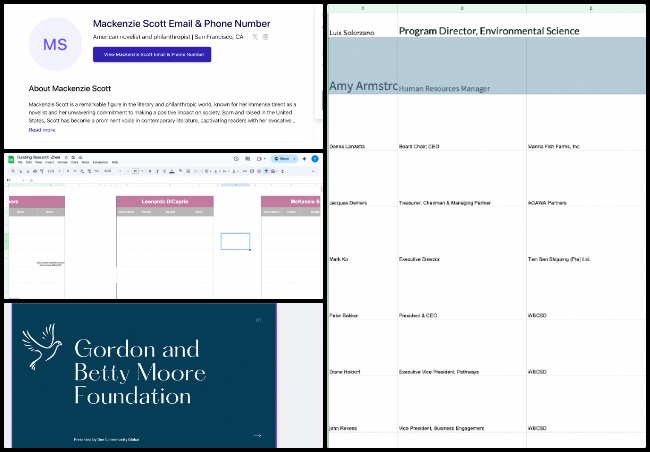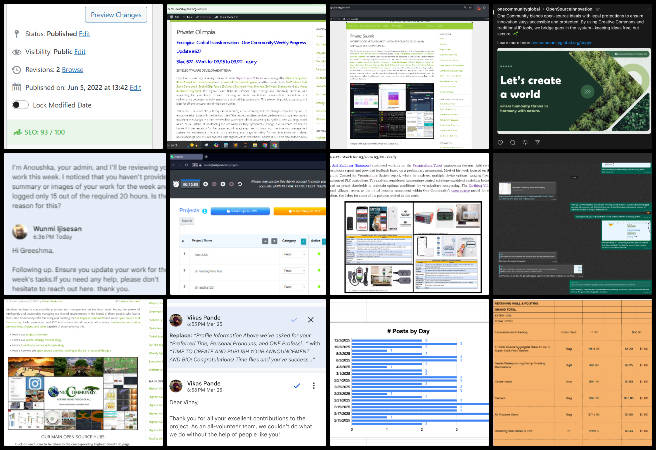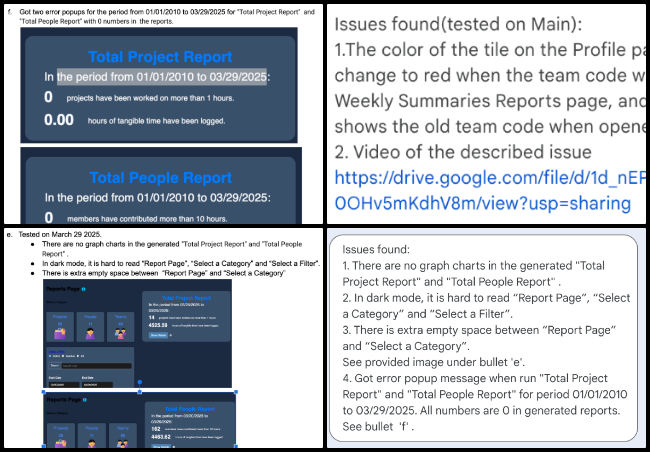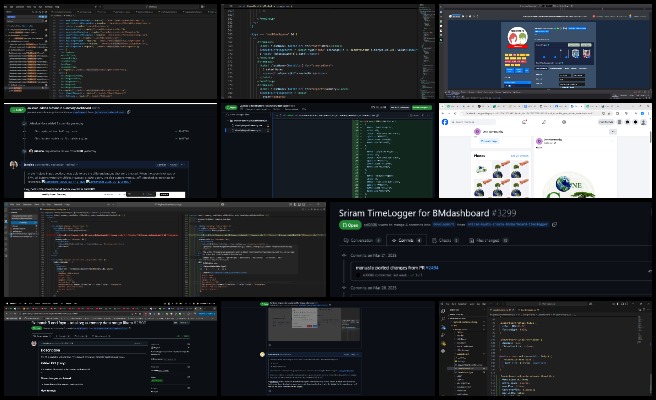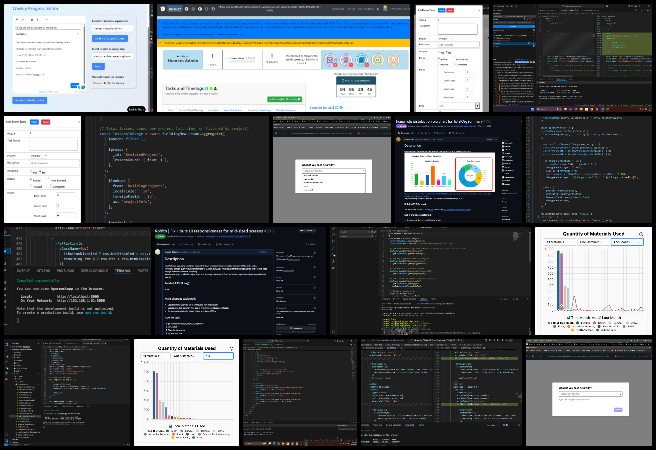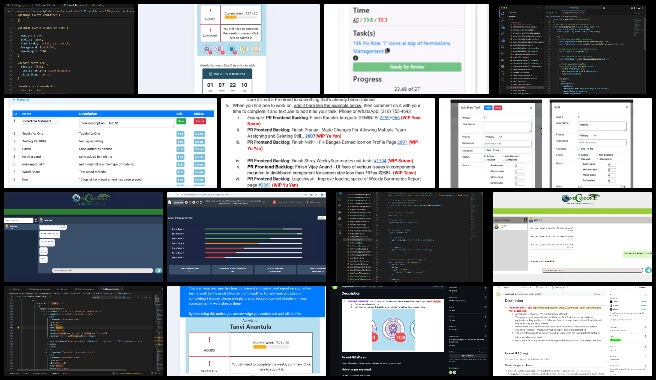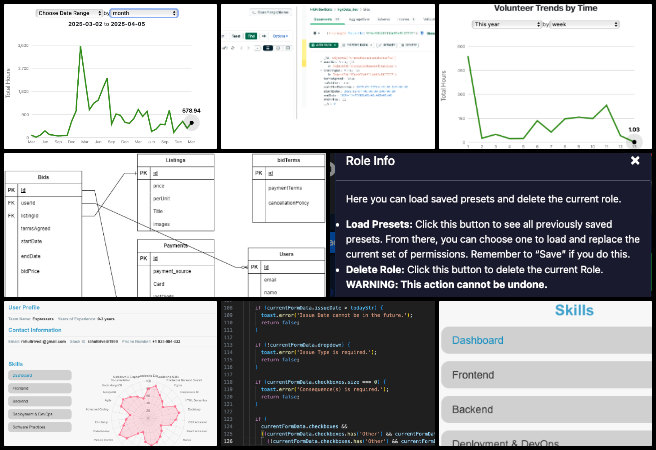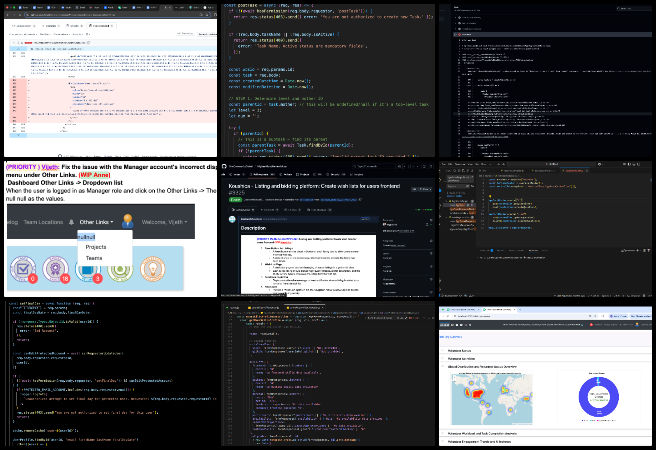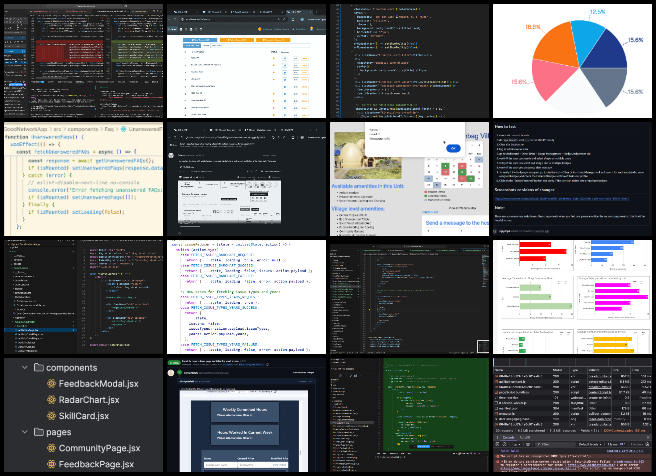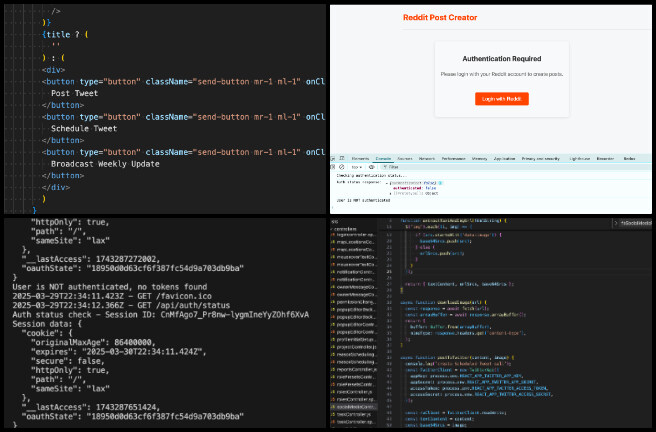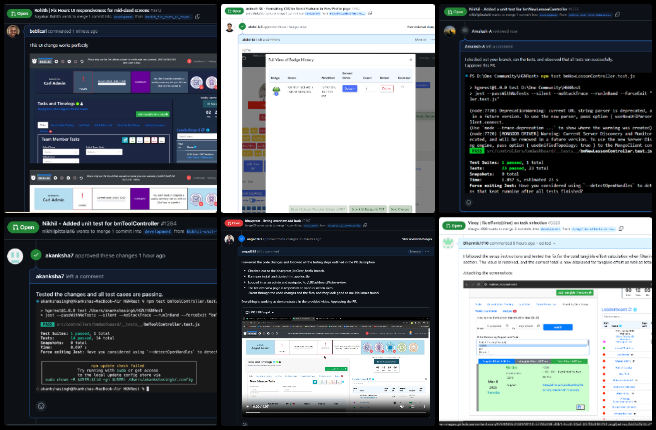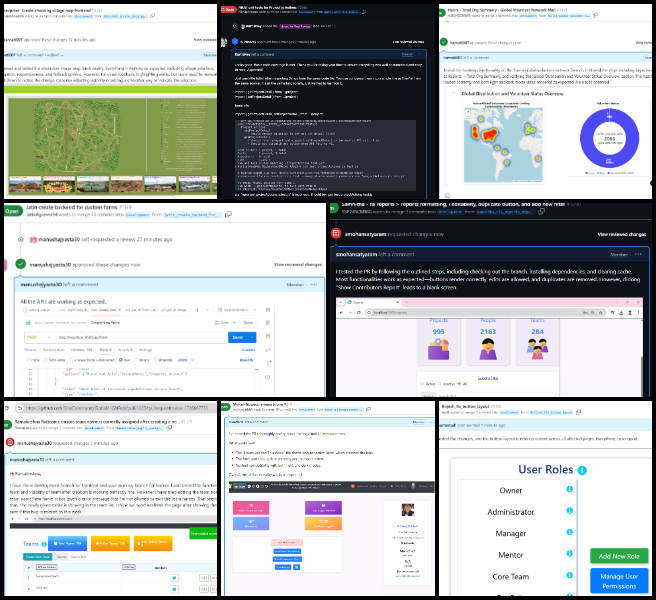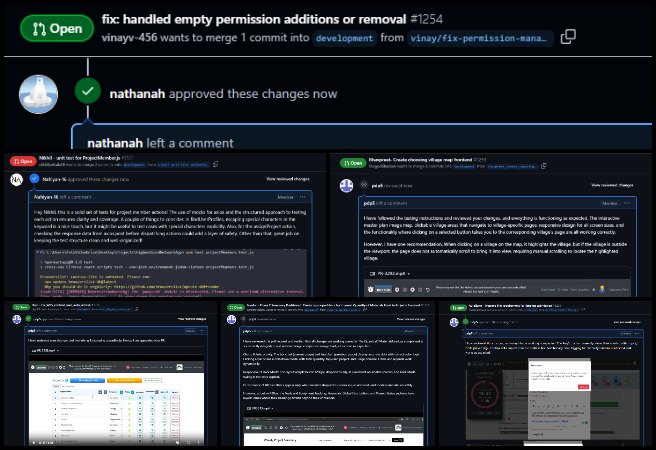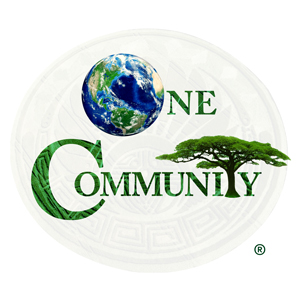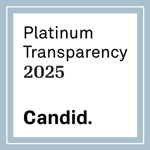Open Sourcing Global Sustainability Strategies – One Community Weekly Progress Update #628
At One Community, we are proud to be open sourcing global sustainability strategies. Our all-volunteer team is dedicated to creating a world that works for everyone by integrating sustainable approaches to food, energy, housing, education, for-profit and non-profit economic design, social architecture, fulfilled living, global stewardship practices, and more. Our model becomes self-replicating and will be used to create a global collaboration of teacher/demonstration hubs, all while doing this for “The Highest Good of All“. We believe in open sourcing and free sharing the complete process to evolve sustainability and regenerate our planet.
- Here’s our project overview
- Here’s our world-change methodology
- Here’s how this becomes self-replicating
- Here’s how we are open source and free-sharing all the do-it-yourself designs
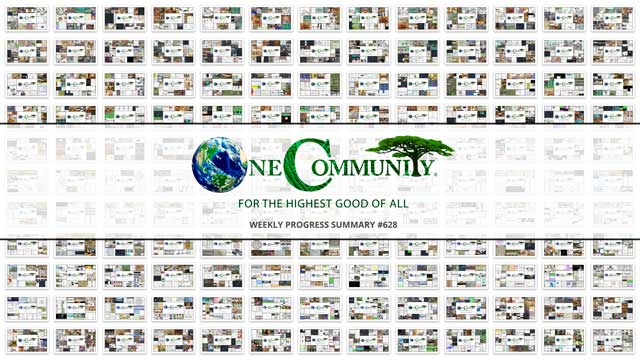
OUR MAIN OPEN SOURCE HUBS
Click on each icon to be taken to the corresponding Highest Good hub page.
One Community’s physical location will forward this movement as the first of many self-replicating teacher/demonstration communities, villages, and cities to be built around the world. This is the March 31st, 2025 edition (#628) of our weekly progress update detailing our team’s development and accomplishments:
Open Sourcing Global Sustainability Strategies
One Community Progress Update #628
DONATE | COLLABORATE | HELP WITH LARGE-SCALE FUNDING
CLICK HERE IF YOU’D LIKE TO RECEIVE AN EMAIL EACH WEEK WHEN WE RELEASE A NEW UPDATE
YOU CAN ALSO JOIN US THROUGH SOCIAL MEDIA
ONE COMMUNITY WEEKLY UPDATE DETAILS
HIGHEST GOOD HOUSING PROGRESS
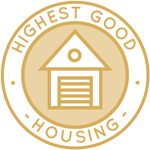 One Community is open sourcing global sustainability strategies through Highest Good housing that is artistic and beautiful, more affordable, more space efficient, lasts longer, DIY buildable, and constructed with healthy and sustainable materials:
One Community is open sourcing global sustainability strategies through Highest Good housing that is artistic and beautiful, more affordable, more space efficient, lasts longer, DIY buildable, and constructed with healthy and sustainable materials:
- Learn about: Our Upcoming Crowdfunding Campaign
- Learn about the different village models: 7 Sustainable Village Models
- Visit the open source portals for the first two: Earthbag Village OS Hub | Straw Bale Village OS Hub
This week, Adil Zulfiquar (Engineer) continued working on the Vermiculture Toilet engineering designs. Adil integrated feedback into the vermiculture temperature control report, aligning it with process requirements. He worked on temperature monitoring devices by creating a spreadsheet to compare and rank them based on their features and developed a comparison dashboard. He assigned ranks to the devices using a scoring system. He performed the same task for temperature control systems, aligning them with process requirements and ranking them according to various features. He also rewrote and repositioned the list of devices based on the ranking for both sections. The Earthbag Village, the first of seven planned villages, serves as the initial housing component within One Community’s open source model for open sourcing global sustainability strategies. See below for some of the pictures related to this work.
Anil Karathra (Mechanical Engineer) continued advancing the engineering and design of the Vermiculture Toilet for the Earthbag Village project. Feedback was received from Jae on both the initial and new latching concepts for the toilet seat design. Based on this input, alternative hardware options for anchoring were researched. Multiple CAD models were created to explore different latching methods, and new design concepts were shared with Jae for further review. Participation in the weekly team meeting took place, and updated CAD models for the toilet seat were developed. A weekly summary was compiled, and relevant design screenshots from the past week were uploaded to Dropbox. This commitment to open sourcing global sustainability strategies drives the development of innovative, eco-friendly solutions that balance environmental responsibility with high standards of functionality. See below for pictures related to this work.
Audrey Gunawan (Mechanical Engineer) continued working on the Vermiculture Toilet plumbing details. Audrey worked on the SolidWorks model, focusing on fixing existing mating errors. She addressed issues with the pipes and reviewed SolidWorks tutorials to learn how to rotate them to the correct angle. She researched available parts for the model and evaluated cost-efficient options. Additionally, Audrey modeled holes in the wye connectors to allow them to connect to the plumbing for the vermiculture toilets. As the first of seven planned villages, Earthbag Village provides the initial housing within One Community’s open source designs for open sourcing global sustainability strategies. See below for some of the pictures related to this work.
Derrell Brown (Plumbing Designer) continued working on the Earthbag Village 4-dome home plumbing details. Derrell coordinated with Michaela to address the 75% coordination electrical set previously submitted for review, revising comments from the markup. Updates included adding receptacles from the upper loft to circuits on the first floor plan, calculating kVa and demanded amps for the revised circuits, reflecting the water heater circuit for the loft area, and editing text to match existing styles. After updating the electrical plan, he reviewed previous mechanical and plumbing plans for potential questions and comments to finalize the set of drawings. Before generating questions, Derrell reviewed applicable codes and standards for the location to identify any discrepancies, including ventilation requirements for floor drains, water heater placement in relation to return air location, and fixture unit values for specified fixtures in the four-dome structure. One Community’s open source launching of open sourcing global sustainability strategies begins with Earthbag Village, the first of seven planned villages providing housing. See below for some of the pictures related to this work.
Faeq Abu Alia (Architectural Engineer) continued his work on the Earthbag Village 4-dome home renders. Faeq refined the design of the 4-dome home by adding curtains and decorative elements to enhance interior aesthetics. Double-layered materials were applied to selected areas to improve visual appeal and maintain design cohesion. These updates were aligned with the existing architectural layout to ensure consistency across all domes. Each new element was integrated to preserve the structure’s functionality and spatial arrangement. The Earthbag Village is the first of 7 to be built as the housing component of One Community’s open source plans for open sourcing global sustainability strategies. View examples of this work in the pictures provided below.
Michaela Silva (Architect) continued working on the architectural details for the Earthbag Village 4-dome home design. Michaela reviewed the status of the electrical drawings and requested that the loft floor outlet be placed on the same circuit as the bedroom below. She worked on completing the window documentation, creating a loft window detail, finishing the window elevation views, and finalizing the window sheet. She also created a loft plan view and placed it on a sheet. As the first of seven villages in One Community’s open source plan for open sourcing global sustainability strategies, the Earthbag Village represents the housing element. See her work in the collage below.
Rumi Shah (Civil Engineer) continued working on the Earthbag Village upgrades to bring our designs closer to construction-ready plans. Rumi worked on the foundation design for the 6-dome structure, focusing on completing the foundation work and ensuring compliance with structural specifications. In addition to coordinating the final stages of the foundation, Rumi reviewed team feedback and made necessary adjustments to maintain structural integrity and safety. This process involved collaborating with engineers, incorporating feedback, and refining details to meet both aesthetic and practical requirements. One Community’s open source resources for open sourcing global sustainability strategies begin with the Earthbag Village, the first of seven planned villages providing housing. See below for some of the pictures related to this work.
Yi-Ju Lien (Environmental Engineer) continued her work on the Earthbag Village LEED points related to stormwater retention. Yi-Ju focused on the drainage system design for the stormwater harvesting system. She added a “Drainage System Design” section under the stormwater harvesting system and a “Storm Drain System Design” section for stormwater management. She revised and provided content for the introduction, process, and methods used in the drainage system design. She worked on the CAD drawing for the drainage pipe design, collected length data, and identified pipe placement locations. Using the visualized map, Yi-Ju determined the drainage system dimensions based on hydraulic calculations and reevaluated the pipe design according to the updated catchment area. She revised the spreadsheet, which previously relied on a storm drain sizing table that lacked flexibility for varying slopes and drain shapes and did not account for water levels under peak flow. The updated spreadsheet includes Manning’s equation for more accurate pipe capacity calculations, a water level column to assist with adjusting the system to meet peak discharge conditions, and a freeboard check to flag instances where the safety buffer falls below 10%. Yi-Ju integrated her work on the water system design with the original webpage content, reorganizing and revising it for consistency and clarity, highlighting the importance of maintaining collaboration and unity in open sourcing global sustainability strategies. See some of the work done in the collage below.
DUPLICABLE CITY CENTER PROGRESS
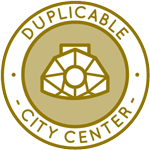 One Community is open sourcing global sustainability strategies through a Duplicable and Sustainable City Center that is LEED Platinum certified/Sustainable, can feed 200 people at a time, provide laundry for over 300 people, is beautiful, spacious, and saves resources, money, and space:
One Community is open sourcing global sustainability strategies through a Duplicable and Sustainable City Center that is LEED Platinum certified/Sustainable, can feed 200 people at a time, provide laundry for over 300 people, is beautiful, spacious, and saves resources, money, and space:
- Learn about this building and it’s function: Duplicable City Center Open Source Hub
This week, Jason Bao (Architectural Designer) continued working on producing renders for the Duplicable City Center library. Work began on the exterior garden and barn area, building on Nimika’s progress. Vegetation and textures were added to the space, model clipping issues were resolved, and the file was organized for clarity. Initial assets for the garden and barn area were planned and incorporated, while heavy models were removed to improve file performance. Textures were adjusted, render configurations and camera shots were established, and test renders were performed to assess progress and quality. The Duplicable City Center is a foundational part of One Community’s open-source model, which excels in open sourcing global sustainability strategies. See some of this work in the pictures below.
Mohammed Maaz Siddiqui (Architect) continued working on the cupola renders for the Duplicable City Center project. He worked on the laundry area, which had no materials assigned, by adding flooring and populating the space with people and objects to make it appear more realistic and active. He also developed the toilet scene by including a few people, and spent time fixing issues related to furniture placement and alignment in other scenes to ensure consistency and accuracy across the project. Within One Community’s open-source framework, the Duplicable City Center plays a central role in the mission of open sourcing global sustainability strategies. The images below showcase some of this work.
Manjiri Patil (Mechanical Design Engineer) continued working on the designs for the Duplicable City Center DIY-replicable hub connector. She is currently working on the manufacturing document for Jae, ensuring all necessary details and specifications are well-documented. She is also creating detailed diagrams for the DCC hub connector assembly to enhance clarity and accuracy. One Community’s open-source Duplicable City Center is a key part of open sourcing global sustainability strategies. The images below showcase some of this work.
Sanket Basannavar (Mechanical Engineer) continued working on the Duplicable City Center spa cover as part of the City Center Natural Pool and Eco-spa Designs. A SolidWorks model was created for the walls and mechanical room and assembled with the spa and spa cover. A mechanism was designed to position the motor for rotating the pulley that will open the spa cover. The AutoCAD plan was revised by removing the space allocated for the waterfall, allowing for more room for additional elements such as chairs and tables. open sourcing global sustainability strategies relies on open-source tools like One Community’s Duplicable City Center. The images below showcase some of this work.
Shu-Tsun (Engineer) continued working on the Duplicable City Center by conducting the structural and frame analysis of the City Center dome using Autodesk Inventor, as well as working on the spreadsheet for which she is responsible. She had a meeting with Dipak, during which they discussed some problems related to her ongoing work. Following their conversation, Shu-Tsun revisited her previous analysis and identified a few mistakes that had affected the accuracy of the results. In response, she decided to restart the analysis from the beginning to ensure that everything was processed correctly. Additionally, she took the time to review the instruction manual and other supporting documentation to gain a clearer understanding of the correct procedures, aiming to avoid similar issues moving forward and to improve the overall quality of her work. Within One Community’s open-source framework, the Duplicable City Center plays a central role in the mission of open sourcing global sustainability strategies. The images below showcase some of this work.
Srujan Pandya (Mechanical Engineer) continued helping with the Duplicable City Center FEA analysis. He worked with Dipak and Jae to standardize the constraints across all versions of the analysis, ensuring a consistent approach where the ground is fixed with all degrees of freedom clamped. This was implemented in both the traditional dome and the previous City Center dome analysis. The results for version 2 and version 3 were recorded and uploaded, showing that the bending observed in earlier analyses was eliminated, as the pin joints previously allowed rotation and did not restrict rotational degrees of freedom. Within One Community’s open-source framework, the Duplicable City Center plays a central role in the mission of open sourcing global sustainability strategies. The images below showcase some of this work.
HIGHEST GOOD FOOD PROGRESS
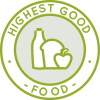 One Community is open sourcing global sustainability strategies through Highest Good food that is more diverse, more nutritious, locally grown and sustainable, and part of our open source botanical garden model to support and share bio-diversity:
One Community is open sourcing global sustainability strategies through Highest Good food that is more diverse, more nutritious, locally grown and sustainable, and part of our open source botanical garden model to support and share bio-diversity:
- Learn about the structures: Hoop House Hub | Aquapini & Walipini Open Source Hub
- See what we’ll be growing: Gardens & Hoop Houses | Large-scale Structures | Food Forest | TA
This week, the core team completed adding photos to the Master Tools, Equipment, and Materials/Supplies document, including items related to the Goat, Chicken, and Rabbit sections. They also created three months’ worth of folders within the weekly photos folder for future reporting. All future projects will have individual listings, each accompanied by photos and usage descriptions. The Highest Good Food initiative is a key component of One Community’s open source plans, focused on open sourcing global sustainability strategies, and exemplifies the organization’s commitment through innovative design and implementation. Below are some of the images showcasing this work.
Dirgh Patel (Volunteer Mechanical Engineer) continued assisting with the Climate Battery design evolutions. He researched to evolve our open sourcing global sustainability strategies by studying various aspects crucial to climate battery design, starting with an article on geothermal heating applications in unconventional climates. He read the role of thermal mass and lag, along with soil types, on heat dissipation and compared the performance of in-ground and above-ground structures using FEA. Dirgh studied soil temperature variations with depth, season, and the efficiency of vertical and horizontal ground loops. He explored an integrated energy demand-yield model that combines energy consumption with crop yield optimization, aiming to reduce costs and minimize climate change impacts. He also read a general paper about how ground thermal properties help stabilize greenhouse temperatures, providing environmental and economic benefits, particularly for developing countries. The Highest Good Food initiative is a key component of One Community’s open source plans, focused on open sourcing global sustainability strategies, and exemplifies the organization’s commitment through innovative design and implementation. Below are some of the images showcasing his work.
Jay Nair (BIM Designer) continued working on Aquapini and Walipini Planting and Harvesting lighting and HVAC design. He assisted with the research for open sourcing global sustainability strategies by recalculating the lighting energy requirements using the Philips GreenPower LED TopLighting Force 2.0, a more energy-efficient fixture, and updated the project documentation accordingly. Additionally, research was performed on using Dynamo for Revit to develop the lighting fixture for the Walipini 1 lighting plan. He also reached out to Signify customer service to request the BIM model of the fixture and pricing information but did not receive a response. The Highest Good Food initiative is a key component of One Community’s open source plans, focused on open sourcing global sustainability strategies, and exemplifies the organization’s commitment through innovative design and implementation. Below are some of the images showcasing this work.
Keerthi Reddy Gavinolla (Software Developer) began working on the Highest Good Food page additions covering small-business and urban community options. She added content from the provided rollout document, integrated it into the site, and updated links with proper titles and names. She also formatted spacing, adjusted headings, and added before headings to improve layout consistency. One Community’s open source tools and tutorials for open sourcing global sustainability strategies begin with the Earthbag Village, the first of seven planned villages providing housing. See below for some of the pictures related to this work.
Mary Nelson (Landscape Planner) continued research for open sourcing global sustainability strategies related to Highest Good Food. This week was focused primarily on editing the soil amendments strategy and making several updates to the document’s format to align with One Community standards. She also continued working on the maintenance plan, including a case study for the One Community space. Mary also explored nitrogen fixing and researched the most effective cover crop for the meadow garden that would not affect the soil’s pH. She determined that the pH and nutrient requirements for vegetable gardening and meadow gardening are significantly different. The Highest Good Food initiative is essential to One Community’s open source plans, focused on open sourcing global sustainability strategies, and exemplifies the organization’s commitment through innovative design and implementation. Her contributions are highlighted in the collage below.
Pallavi Deshmukh (Software Engineer) continued working on adding the GIS details to the open source permaculture design page. This week she assisted with the forwarding of open sourcing global sustainability strategies by completing interviews and providing details accordingly. Later, she completed the web page for open source and DIY permaculture design and submitted it for review. Jae provided feedback, primarily focused on improving images and headlines related to the index, and she is making adjustments based on these suggestions. The Highest Good Food initiative is a key component of One Community’s open source plans, focused on open sourcing global sustainability strategies, and exemplifies the organization’s commitment through innovative design and implementation. Her contributions are highlighted in the collage below.
Tanmay Koparde (Industrial Engineer And Team Administrator) continued optimizing the Food Procurement and storage strategy to enhance efficiency and sustainability. He focused on the research for open sourcing global sustainability strategies by working on how the Just-In-Time (JIT) methodology can optimize food storage and address supply chain disruptions using the NetSuite ERP software. He explored strategies to tackle inventory shortages and ensure seamless food distribution. Additionally, Tanmay tried resolving procurement discrepancies by implementing the NetSuite ERP system to optimize overall inventory storage and maintain optimal buffer stocks for emergencies. The Highest Good Food Initiative is a key component of One Community’s open source plans, focused on open sourcing global sustainability strategies, and exemplifies the organization’s commitment through innovative design and implementation. See his work in the collage below.
Vatsal Tapiawala (Mechanical Engineer) continued working on evaluation of ideas from Paul Wheaton’s “Truly Passive Greenhouse” into the Aquapini/Walipini structures. He contributed to the development of open sourcing global sustainability strategies by finalizing the earthen roof report. To ensure easy access for future reference, Vatsal organized all relevant files. He also refined the heat transfer section of the report by making formatting adjustments. Additionally, he analyzed potential changes to the structure’s lighting setup, considering its overall design and functionality. The Highest Good Food Initiative is a key component of One Community’s open source plans, focused on open sourcing global sustainability strategies, and exemplifies the organization’s commitment through innovative design and implementation. See his work in the collage below.
HIGHEST GOOD ENERGY PROGRESS
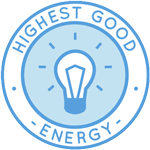 One Community is open sourcing global sustainability strategies through Highest Good energy that is more sustainable, resilient, supports self-sufficiency and includes solar, wind, hydro and more:
One Community is open sourcing global sustainability strategies through Highest Good energy that is more sustainable, resilient, supports self-sufficiency and includes solar, wind, hydro and more:
- Learn about the open source sustainable-energy foundations: Solar, Hydro, and Wind
- Explore our research into the most sustainable products and companies for saving water and energy: Insulation, Eco-laundry, Lightbulbs and Light Bulb Companies, Doors and Door Companies, Windows and Window Companies, Toilets, Faucets and Faucet Accessories, Urinals, and more.
This week, Dishita Jain (Data Analyst) continued assisting with the Highest Good Energy research and cost analysis for open sourcing global sustainability strategies. She made updates to the Excel sheet and PDFs that were created for the source links. She also reviewed and revised cost data, made corrections to previously added figures, and incorporated all feedback received from Jae before sending the updated version back for review. And Dishita contributed to OC Administration tasks by reviewing training team blog posts for specific content, and completing the team review by creating a collage and updating the WordPress page. The Highest Good Energy initiative is a key component of One Community’s open source plans, focused on open sourcing global sustainability strategies, and exemplifies the organization’s commitment through innovative design and implementation. Below are some of the images showcasing this work.
Muhammad Sarmad Tariq (Electrical Engineer) continued assisting with off-grid and grid-tied comparisons as part of the Highest Good Energy component. This is part of research for open sourcing global sustainability strategies covering sustainable power supply and this week’s focus was a report describing the calculator used to determine profit and net savings for both off-grid and grid-tied solar PV systems. He worked on the Battery sizing, Inverter sizing, and Economic Analysis of an Off-Grid System, which includes several costs of the PV system and Net Savings of the Off-Grid System. He received feedback from Jae regarding the report on the Off-Grid vs On-Grid PV system. The Highest Good Energy initiative is a key component of One Community’s open-source plans, focused on open sourcing global sustainability strategies, and exemplifies the organization’s commitment through innovative design and implementation. See his work in the collage below.
HIGHEST GOOD EDUCATION PROGRESS
 One Community is open sourcing global sustainability strategies through Highest Good education that is for all ages, applicable in any environment, adaptable to individual needs, far exceeds traditional education standards, and more fun for both the teachers and the students. This component of One Community is about 95% complete with only the Open Source School Licensing and Ultimate Classroom construction and assembly details remaining to be finished. We’ll report on the final two elements to be finished as we develop them. With over 8 years of work invested in the process, the sections below are all complete until we move onto the property and continue the development and open sourcing process with teachers and students – a development process that is built directly into the structure of the education program and everything else we’re creating too:
One Community is open sourcing global sustainability strategies through Highest Good education that is for all ages, applicable in any environment, adaptable to individual needs, far exceeds traditional education standards, and more fun for both the teachers and the students. This component of One Community is about 95% complete with only the Open Source School Licensing and Ultimate Classroom construction and assembly details remaining to be finished. We’ll report on the final two elements to be finished as we develop them. With over 8 years of work invested in the process, the sections below are all complete until we move onto the property and continue the development and open sourcing process with teachers and students – a development process that is built directly into the structure of the education program and everything else we’re creating too:
- Program Overview: Education Open Source Hub
- How the components work together in designing human orchestrated eco-abundance: How to use the Education for Life Program
- Lesson Plans for Life – Lesson Plans How-to
- Foundations of Outstanding Leaders, Teachers, and Communicators
- Curriculum for Life
- Teaching Strategies for Life
- Learning Tools and Toys for Life
- Evaluation and Evolution
This week, Akhil Guntur (FullStack Engineer) focused on deepening his understanding of the Phase 4 software component covering Highest Good Education requirements. He spent time reviewing the project guide and associated documentation to clarify the expectations and functionality needed for backend development. With these insights, he started drafting a backend models document, carefully considering different possibilities and aligning the structure with the project’s goals. The document reflects his current understanding and serves as a solid foundation for further discussion. Akhil plans to review the draft with Jae and his team members, including Harshitha, to gather feedback and make any necessary refinements. These collaborative inputs will help ensure alignment before moving forward. The One Community model of open sourcing global sustainability strategies with sustainably built classrooms like this is an excellent example of sustainable change for the whole planet. See the collage below for his work.
Chitra Siddharthan (Data Analyst and Team Administrator) continued focusing on the existing web pages of the Highest Good Network Phase II and started helping with the Phase 4 software component covering Highest Good Education requirements. This week, she focused on completing the weekly summary, managing Dropbox files, and updating the blog for team Code Crafters for week 627. The tasks also included reviewing the work of Keerthi and Dishita. Slack communications were handled, addressing messages from Ashrita, Nikhil, and Rishitha regarding conflicts in their pull requests for Phase 2, and clarifying Sanjeev’s doubts about his current task. In addition, issues and queries related to open sourcing global sustainability strategies were resolved through responses to questions from Honglin, Nikhil, Sanjeev, and Sriram on Slack. A Zoom call was held with Sanjeev to discuss his action item in Phase 2, and Nikhil’s query on his action item and the Phase 2 user manual was addressed. Efforts were also directed toward updating and refining the user manual for Phase 2, as well as responding to additional queries on Slack. Tasks for Phase 2 were managed by adding new items and providing updates to the user manual. Additionally, the components for Deliverable 2 in Phase 4 were assessed and broken down to create a Figma wireframe. The One Community model of open sourcing global sustainability strategies with sustainably built classrooms like this is an excellent example of sustainable change for the whole planet. See the collage below for her work.
Mrinalini Raghavendran (Software Engineer) continued refining and documenting both frontend and backend requirements for various graphs. She added new requirements to the document and reviewed feedback provided by Jae, which was incorporated into the updates. Over the course of the week, she went through Jae’s feedback video to ensure clarity on the changes needed. She also made notes of further adjustments and ideas to suggest. By Day 4, Mrinalini had added all refined requirements to the document, formatted them properly, and made additional notes on suggestions for changes. Throughout the week, she continued to update the document by adding more requirements and fine-tuning the formatting. By forwarding open sourcing global sustainability strategies with classrooms like this, One Community provides a replicable example for global sustainable development. See the collage below for her work.
HIGHEST GOOD SOCIETY PROGRESS
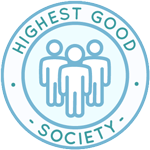 One Community is open sourcing global sustainability strategies through a Highest Good society approach to living that is founded on fulfilled living, the study of meeting human needs, Community, and making a difference in the world:
One Community is open sourcing global sustainability strategies through a Highest Good society approach to living that is founded on fulfilled living, the study of meeting human needs, Community, and making a difference in the world:
- Read the Highest Good society overview: Highest Good Society
- Learn about the model for fulfilled living and sharing: A Day in the Life
- Learn about the 4 economic models: RBE | For-profit | Non-profit | Entrepreneurship
- Learn about our open source community collaboration and management software: The Highest Good Network
This week, the core team completed over 48 hours managing One Community’s volunteer-work review not included above, emails, social media accounts, web development, new bug identification and bug-fix integration for the Highest Good Network software, and interviewing and getting set up new volunteer team members. They also shot and incorporated the video above that talks how open sourcing global sustainability strategies are a foundation of the bigger picture of everything One Community is doing. The image below shows some of this work.
Anoushka Hazari (Data Analyst) continued working on code to automate and simplify the Highest Good Network software promotion process. She reviewed the team’s pull requests and updated the PR review table. A blog was written, a collage was designed to complement it, and a previous error in the blog was corrected for accuracy. The HGN spreadsheet was updated with necessary changes, and work listed in Sheet 4 was reviewed, including a peer’s blog. Research was done on implementing the dashboard in Figma for development on the One Community website. Jae’s feedback from the Loom video, along with online research, informed an exploration of best practices for structuring the design and ensuring usability. The focus was on translating visual elements into an interactive layout that developers can work with while optimizing the design for collaboration. Enhancements were made to the Pull Request Review Dashboard for Jae to review, and it will be posted on Figma. The dashboard will provide insights into the PR process, including key metrics, visual charts, and a PR table. It will display open and closed PRs, review activity by team members, status distributions, and filtering options. The interface will be clean and responsive, with color-coded indicators and avatar stacks for improved visualization. The design is being prototyped in Figma using real PR data. This work helps One Community’s mission and reinforces our commitment to open sourcing global sustainability strategies. The following images show her work for the week.
Govind Sajithkumar (Project Manager) continued focusing on Meta Analytics Reporting and Tracking by updating audience data with the latest metrics for Facebook and Instagram through March 26. He gathered, pre-processed, and cleaned social media performance data, imported it into spreadsheets, and verified data integrity across reporting frameworks. He managed daily social media content for both platforms by creating and scheduling 6-8 posts per day using optimized posting times based on recent engagement data to reach the audience. Govind updated the Open Source Social Media Design spreadsheet with details of newly scheduled posts, publishing dates, and performance metrics to support monitoring efforts and refreshed spreadsheets and dashboards to reflect current performance metrics for accurate analytics reporting. He also completed PR Review Team Management tasks by providing feedback on team documents, updating the PR Review Team Table with required information, reviewing fellow admins’ blog sites, and submitting his own admin feedback. This work helps One Community’s mission of open sourcing global sustainability strategies. The following images show his work for the week.
Hritvik Mahajan (Data Analyst) continued focusing on Twitter/X.com marketing and administrative tasks. He worked on multiple projects, including software testing, marketing, and administration. He reviewed and tested various pull requests for the HGN Phase 1 front end, following up with team members regarding necessary changes and merge conflicts. In marketing and promotion, he posted high-engagement content on Twitter communities, managing and organizing posts based on engagement metrics. Additionally, Hritvik provided feedback and comments on the work of admin team members for Blog #627 in the Step 4 document. This work helps One Community’s mission and reinforces our commitment to open sourcing global sustainability strategies. The following images show his work for the week.
Jaiwanth Reddy Adavalli (Project Manager) continued work on designing the Phase 2 Highest Good Network dashboard. He designing wireframes for the role-suggesting page for prospective volunteers. He also continued his work on the Materials Tracking Dashboard and the Job Listing page dashboard, creating new graphs and corresponding action items, and updated the action items for existing graphs. As part of the PR review team, he reviewed the pull requests of the volunteer team assigned to him. This work helps One Community’s mission of open sourcing global sustainability strategies. The following images show his work for the week.
Raghav Dinesh Pamuru (Product Manager) continued work on project coordination for our complete social media dashboard and tracking process. He focused on managing product development, coordinating cross-functional teams to enhance platform usability and engagement. He worked on refining feature requirements, analyzing user feedback, and collaborating with developers to address technical challenges. Additionally, Raghav monitored project timelines, updated documentation, and contributed to strategic discussions on improving operational efficiency. His efforts included streamlining workflows, ensuring alignment with organizational goals, and facilitating communication among stakeholders to drive project progress. This work helps One Community’s mission and reinforces our commitment to open sourcing global sustainability strategies. The following images show his work for the week.
Yash Shah (Data Analyst and Team Administrator) continued his admin work and managed the social architecture component of the Highest Good Network software. He followed up with the developers responsible for Phase 3 development tasks to obtain necessary approvals and address any outstanding conflicts. He worked on the feedback video and coordinated with the Software team to implement the required changes, focusing specifically on adjustments related to Dark Mode. Yash also collaborated with Nishita on the Dark Mode implementation, which has been applied to PR 3133 and is currently awaiting review. Additionally, Yash created a blog post for Dev Dynasty, organized the folder for the week, compiled a collage, and provided feedback on fellow volunteers’ blogs. This work helps One Community’s mission of open sourcing global sustainability strategies. The following images show his work for the week.
Zhen Xiang (Financial Analyst) continued focusing on researching potential investors. This week he focused on researching contacts related to the Gordon and Betty Moore Foundation, investigating its executive team and partner organizations to build a detailed database that now includes over 120 potential investors and key decision-makers. Alongside this, Zhen continued refining the Interest Matrix, completing weighted scoring for 68 investors while adjusting evaluation criteria to improve precision and relevance. The research also involved testing different data sources and search strategies to optimize contact identification efficiency. In parallel, he analyzed the foundation’s investment trends, funding patterns, and grant allocation to inform future decision-making. Additionally, preliminary work started on developing a pitch deck to effectively present research findings and strategic insights. The week’s efforts centered on data collection, contact research, analytical refinements, and early-stage material preparation to support next steps. This work helps One Community’s mission and reinforces our commitment to open sourcing global sustainability strategies. The following images show his work for the week.
ADMINISTRATION TEAM
The Administration Team summary, covering their work administrating and managing most of One Community’s ongoing process for open sourcing global sustainability strategies was managed by Bhakti Tigdi (Project Manager) and includes Himanshu Mandloi (Engineering Project Manager), Jibin Joby (Data Analyst), Kishan Sivakumar (Administrative Assistant and Software Team Manager), Olawunmi “Ola” Ijisesan (Administrative and Management Support), Olimpia Borgohain (Data Analyst and Team Administrator), Preksha Welankiwar (Digital Marketing Manager), Rachna Malav (Data Analyst), Rishi Sundara (Quality Control Engineer And Team Administrator), Ryutaro Wongso (Economic Analyst and Team Administrator), Saumit Chinchkhandi (Administrative Assistant and Software Engineer), Vikas Pande (Software Administrator), and Vishnu Murali (Data Analyst). The Highest Good Network software is how we’ll be managing and objectively measuring our process for open sourcing global sustainability strategies through our social architecture, construction, production, and maintenance processes.
This week, the Administration team worked across project coordination, technical support, analytics, and content development. Himanshu managed the daily time log review, followed up on pending entries, addressed unresponsive members, and updated a WordPress blog, also authoring a new post on open sourcing global sustainability strategies. Jibin collaborated with Vishnu to extract data from BlueSky, generate visual reports, manage daily posts, and update housing content, while Kishan handled senior admin duties, reviewed volunteer documents, and worked on SEO pages related to open sourcing global sustainability strategies.
Olimpia scheduled LinkedIn content, organized analytics data, updated design tracking sheets, and completed admin tasks while incorporating discussions on open sourcing global sustainability strategies. Preksha focused on Threads and LinkedIn, strategized social media analytics with Govind, tracked corrections as a new corrective admin, and conducted volunteer interviews. Rachna worked on SEO content, monitored team communication, and responded to comments and emails, while Rishi tested PRs across browsers, optimized blog posts, and added new collages. Ryutaro tracked Binary Brigade development tasks, updated his bio, worked on the cost template for the Duplicable City Center, and contributed to the team blog. Saumit managed PRs for volunteers A–E, provided feedback, conducted front-end testing, and revised his blog, incorporating open sourcing global sustainability strategies. Vikas reviewed bios, updated tracking documents, coordinated blog structure, and clarified edits with Eve and Sujith, while Vishnu refined BlueSky data, created performance visuals, and supported the Lucky Star team with feedback. This work contributes to One Community’s commitment to open sourcing global sustainability strategies. See below to view images of their work.
GRAPHIC DESIGN TEAM
The Graphic Design Team’s summary was managed by Harshitha Rayapati (Program Manager) and includes Aurora Juang (Graphic Designer), Ayub Mohammad (Designer), Junyuan Liu (Graphic Designer, UI/UX Designer), and Yafei (Jojo) Wu (Graphic/UIUX designer) covering their work on graphic designs for open sourcing global sustainability strategies. Aurora created a GIS icon, developed bio announcement posts, and refined the Seven Villages book by updating icons and key visuals. She contributed to six educational social media campaigns, finalized new chapter icons for the website, and submitted campaign graphics for Jae’s review. Ayub designed visual assets for the Net Zero Bathroom project, including a web graphic, a three-page booklet, and a social media post, ensuring alignment with project guidelines and platform-specific engagement.
Junyuan focused on social media content, collecting images and refining visuals for the Most Sustainable Project, incorporating text integration, layout improvements, and sizing adjustments based on feedback. Yafei (Jojo) created and revised four social media images, improving layout structure, color balance, and text alignment to enhance clarity and brand consistency. See the Highest Good Society pages for more on how this contributes to open sourcing global sustainability strategies. See the collage below to view some of their work.
HIGHEST GOOD NETWORK PROGRESS
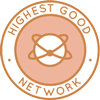 One Community is open sourcing global sustainability strategies through open source Highest Good Network® software that is a web-based application for collaboration, time tracking, and objective data collection. The purpose of the Highest Good Network is to provide software for internal operations and external cooperation. It is being designed for global use in support of the different countries and communities replicating the One Community sustainable village models and related components.
One Community is open sourcing global sustainability strategies through open source Highest Good Network® software that is a web-based application for collaboration, time tracking, and objective data collection. The purpose of the Highest Good Network is to provide software for internal operations and external cooperation. It is being designed for global use in support of the different countries and communities replicating the One Community sustainable village models and related components.
- Learn about our open source community collaboration and management software: The Highest Good Network
This week, the core team continued their work on the Highest Good Network PR testing and confirmed fixes for several issues, including resolving quick setup codes not saving and preventing URLs with a space at the end (PR#1241, PR#3183, PR#3181), fixing a bug in the team code input section of User Management (PR#2758), implementing a fix for the active/inactive toggle for teams (#2701), addressing a bug that prevented users from sending summaries (#1237), and creating a tracking button permission for visibility and usage (PR#3091). Issues that remained unresolved included an error in the “Show Total People Report” feature in Reports (PR#3263) and a Quick Setup Tool issue where the Team Code field should only suggest active team codes (PR#2751). Additionally, they assigned tasks to three volunteers. They also retested the PR related to the team member visibility issue and provided feedback to the volunteer. Testing for “Add active/inactive numbers by teams on the team page” (#2850) was not possible due to this ongoing bug. These improvements represent incremental steps towards the realization of open sourcing global sustainability strategies. See the Highest Good Society and Highest Good Network pages for more on how this relates to open sourcing global sustainability strategies. The collage below shows some of their work.
ALPHA SOFTWARE DEVELOPMENT TEAM
This week, the Alpha Team’s summary, covering their work on the Highest Good Network software, was managed by Lin Khant Htel (Frontend Software Developer) and the team includes Eve Ye (Volunteer Software Engineer Intern), Jiaqi Nie (Software Engineer), Nikita Kolla (Full Stack Developer), Rupa Rajesh Bhatia (Software Engineer), Sujith Reddy Sudini (Full-Stack Software Developer) and Vinay Vallabineni (Software Engineer). This software is a foundation of One Community tracking and management process for open sourcing global sustainability strategies. Eve completed the implementation of the Pinterest auto-post functionality for both the frontend and backend. Open sourcing global sustainability strategies played a key role in shaping the approach. On the frontend, the system sends the HTML content obtained from the editor to the backend. The backend processes the HTML by analyzing its structure, extracting images and descriptions, and determining the appropriate parameters for interacting with the Pinterest API. In addition to development, she thoroughly tested the functionality across all possible scenarios, including edge cases, to ensure it functioned properly, contributing to the success of open sourcing global sustainability strategies. Nikita completed the development of the Create Weekly Company Summary Email for Admins feature, fixed bugs in the automated email system, and refined the code before submitting pull requests for both the backend and frontend. She also worked on her stale pull requests by compiling a report on them.
Rupa enhanced the multi-step form’s responsiveness using modular React components and custom CSS. She integrated interactive elements like sliders, custom inputs, and toggles, optimizing state management with React hooks. As part of open sourcing global sustainability strategies, she improved navigation with React Router, implemented real-time validation using Yup, and added digital signatures and user preference settings. She also analyzed workflows and reviewed Lin’s project as part of her managerial training. She collaborated with Eve, Nikita, Sujith, and Vinay to refine project summaries and enhance functionality, ultimately contributing to open sourcing global sustainability strategies.
Sujith focused on refining the HTML structure for the activity comments section, ensuring a clean, organized, and scalable layout aligned with the project’s design guidelines. He also enhanced the styling, improving visual consistency, spacing, and responsiveness to ensure a seamless user experience. By fine-tuning CSS properties, implementing flexible layouts, and maintaining design coherence, he ensured that the comments section integrates aesthetically with the rest of the platform. His contributions laid a strong foundation for open sourcing global sustainability strategies, while enhancing the overall interactivity and usability of the platform. Vinay worked on a bug related to incorrect effort on task selection, completed the fix, and raised a pull request for it. After that, work began on the questionnaire module task for implementing dynamic scoring and ranking logic. Time was spent learning about the module, reviewing the previous schema, and designing an aggregate function for it maintaining open sourcing global sustainability strategies. See below for some of the team’s work.
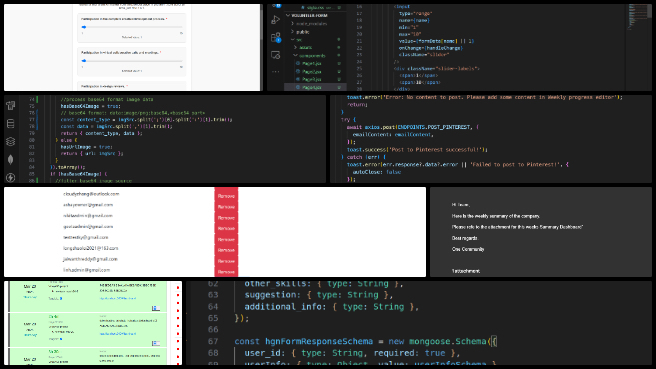
BINARY BRIGADE SOFTWARE DEVELOPMENT TEAM
The Binary Brigade Team’s summary overseeing advancements in the Highest Good Network software was managed by Vijay Anand Pandian (Full Stack Software Engineer), Anirudh Sampath Kumar (Software Developer), and Jaissica Hora (Software Engineer), and includes Deepthi Kannan (Software Engineer), Sriram Seelamneni (Software Engineer), Geeta Matkar (Software Engineer), Sabitha Nazareth (Software Engineer), Sunil Kotte (Full Stack Developer), Aureliano Maximus (Volunteer Software Engineer), Akhil Guntur (FullStack Engineer), Vasavi Vuppala (Software Engineer), Nikhil Routh (Software Engineer), Sidhartha Sunkasari (Software Engineer). The Highest Good Network software is how we’ll be managing and objectively measuring our progress in open sourcing global sustainability strategies through our social architecture, construction, production, and maintenance processes.
This week, Anirudh worked on a bug in the “Select Featured” section of the Badge Report but could not reproduce the issue. Instead, he made minor CSS adjustments to improve the mobile display, contributing to open sourcing global sustainability strategies through accessible UI design. Aureliano resolved merge conflicts, improved Imgur post inputs, and researched a secure method for uploading tasks without exposing API keys, maintaining best practices in open sourcing global sustainability strategies. Deepthi addressed a responsiveness issue for leaderboard headers on large screens, refining breakpoint logic to ensure adaptability across devices.
Geeta fixed a narrow screen bug in the people report, reviewed social media analytics dashboards, and aligned her work with open sourcing global sustainability strategies by promoting data transparency. Jaissica improved the HGN Phase 2 dashboard button, developed backend support for a donut chart, and uploaded weekly summaries, reinforcing open sourcing global sustainability strategies through documentation and communication. Nikhil converted .css files to .module.css, updating class references and modifying JSX files, with 168 CSS and 30 JSX files already revised as part of ongoing improvements.
Sabitha developed backend logic for a village database, creating controllers, routes, and a filter system, supporting open sourcing global sustainability strategies by structuring community-driven data. Sidhartha reviewed PRs, added a date range filter for the organization summary, and improved data accessibility. Sriram enhanced the logger task list, refactored code, and implemented full-stack functionality for the TimeLogger, enabling transparent tracking of contributions, aligning with open sourcing global sustainability strategies.
Sunil debugged the Weekly Summaries Reports page, fixing a backend filtering issue and reorganizing data by creation date to improve accuracy. Vasavi worked on the Facebook auto-poster, addressed UI issues in the dashboard, and corrected Weekly Summary toggle formatting, ensuring seamless integration of features in support of open sourcing global sustainability strategies. See the Highest Good Society and Highest Good Network pages for more on how this relates to open sourcing global sustainability strategies. View some of the team’s work in the collage below.
BLUE STEEL SOFTWARE DEVELOPMENT TEAM
The Blue Steel Team’s summary, presenting their work on the Highest Good Network software was managed by Sheetal Mangate (Software Engineer) and includes Brijesh Naik (Full Stack Software Developer), Ramakrishna Aruva (Software Engineer), Sai Girish Pabbathi (Software Engineer) and Sharan Sai Marpadaga (Software Developer). The Highest Good Network software is how we’ll be managing and objectively measuring our process for open sourcing global sustainability strategies.
This week, Sai completed a property listings component with grid and list views, pagination, and village filtering. He resolved API integration issues, improved error handling, enhanced property card rendering, and optimized backend connections. Performance improvements, such as memoization and skeleton loaders, are planned to further refine the component, supporting open sourcing global sustainability strategies. Brijesh fixed a button layout issue caused by a recent PR and continued troubleshooting a frontend problem where backend data was not displaying correctly. Ramakrishna investigated a recurring “team name issue,” resolved PR conflicts, and analyzed the UserProfile and Project components to locate the bug’s origin, contributing to open sourcing global sustainability strategies through transparent review and debugging.
Sharan began resolving blue square issues and instead took on implementing the Additional Notes and Work Experience section. This process of troubleshooting and collaboration reflects open sourcing global sustainability strategies by fostering continuous improvement. Sheetal progressed on the “Development for Re-Engagement Strategies” task, successfully calling the sendEmail API but encountering issues due to an expiring token. See the Highest Good Society and Highest Good Network pages for more on how this relates to open sourcing global sustainability strategies. The collage below shows some of their work.
CODE CRAFTERS SOFTWARE DEVELOPMENT TEAM
The Code Crafters Team, covering their work on the Highest Good Network software, was managed by Sundar Machani (Software Engineer) and includes Ashrita Cherlapally (Software Engineer), Denish Kalariya (Software Engineer), Dhrumil Dhimantkumar Shah (Software Engineer), Humera Naaz (MERN developer), Kshitij Gugale (Software Engineer), Pavan Swaroop Lebakula (Software Engineer), Rohith Nayakar (Full Stack Developer), Sai Moola (Software Engineer) and Xiaolei Zhao (Software Engineer). The Highest Good Network software is how we’ll manage and objectively measure our process for open sourcing global sustainability strategies through our social architecture, construction, production, and maintenance processes.
This week, Sundar worked on frontend tasks for the Phase 2 Summary Dashboard of the HGN Software Development project. He enhanced the “Quantity of Materials Used” card by adding time-based comparisons, filters, dark mode, responsive design, and improved legends. Fixes included spacing corrections in user profile fields, horizontal scrolling for the materials chart, and refinements to the “Paid Labor Cost” chart. By Friday, all updates were finalized, reviewed, and documented before being pushed to PR#3313, contributing to open sourcing global sustainability strategies. Rohith resolved a responsiveness issue in the Hours UI section, fixed a dropdown bug that limited options to four items, and set up the initial structure for the Team Stats Bar Chart. Kshitij addressed UI issues in the Add Task modal by fixing button alignment, input spacing, and radio button layout. Despite cache-clearing attempts, some updates didn’t reflect immediately, requiring further manual validation to ensure proper integration, ultimately advancing open sourcing global sustainability strategies.
Ashrita researched implementing a mind map visualization using D3.js, outlining plans for interactive features like project filters, tooltips, and click interactions. She considered state management, API integration, and responsiveness to ensure usability. Denish tackled backend optimization to reduce loading times on the Weekly Summary page and began working on a profile feature update that was causing delays, furthering open sourcing global sustainability strategies. Dhrumil completed task 189, which involved creating the bidding page overview frontend, and investigated a potential bug, confirming the issue was already resolved. Pavan addressed PR comments from a previous task and worked on fixing timelog formatting while staying updated on related pull requests, supporting open sourcing global sustainability strategies.
Humera integrated Google and Apple calendars using API calls with a meeting ID, confirming successful data retrieval in Postman and the frontend. However, the unreadMessage field isn’t updating for new meetings, requiring further debugging to ensure proper message updates. Sai created an initial modal for a landing page using CSS from Figma, adding a dropdown menu and linking one word to a separate dashboard modal. Xiaolei implemented the backend API for the Lessons Learned chart, supporting optional query parameters to retrieve project-level lesson counts and monthly trend data. The response structure aligns with frontend requirements, reinforcing open sourcing global sustainability strategies. See the Highest Good Society and Highest Good Network pages for more on how this relates to open sourcing global sustainability strategies. View some of the team’s work in the collage below.
DEV DYNASTY SOFTWARE DEVELOPMENT TEAM
The Dev Dynasty Team’s summary, covering their work on the Highest Good Network software, was managed by Jatin Agrawal (Software Engineer) and includes Honglin Chen (Software Engineer), Nishita Gudiniye (Software Engineer), Shraddha Shahari (Software Engineer), Tanvi Anantula (Software Engineer), Yu Yan (Software Engineer) and Zhifan Jia (Software Engineer). The Highest Good Network software is how we’ll manage and objectively measure our process for open sourcing global sustainability strategies through our social architecture, construction, production, and maintenance processes.
This week, Honglin fixed the icon bubble issue by addressing styling and layout inconsistencies across screen sizes and themes, merging the fix under PR 3317. He also resolved change requests and conflicts in PR 3179 and continued development on the edit button for the inventory types list under PR 1984, including UI updates, state management changes, and backend verification. Jatin worked on a frontend messaging app for a listing and bidding platform, developed dark mode pages, implemented socket-based user communication, and added a notification preference feature supporting in-app, web, SMS, and email options. He also activated an automated email feature to notify users who did not submit a summary, testing it with a selected group of users. His contributions align with open sourcing global sustainability strategies by improving communication tools and automation.
Nishita improved the event registration confirmation modal and implemented dark mode support to ensure consistency with the application theme, including adjustments to the “Event Personalization” page. Shraddha investigated an email-sending issue and confirmed it was unrelated to recent changes, continued reviewing a fix for incorrect badge assignments, and completed and merged a formatting fix for editing tasks on Work Breakdown Pages. Tanvi analyzed Vijay Anand’s UI fixes for dashboard components on small screens under PR 2684, tested the functionality, and confirmed that no further updates were required. These refinements contribute to open sourcing global sustainability strategies by enhancing user experience and accessibility.
Yu Yan resolved a pull request that had been open for eight months due to merge conflicts, focusing on improving performance for the weekly report feature. The issue stemmed from the page loading all data at once, which slowed performance, especially after the introduction of frontend lazy loading. He modified the relevant files, resolved conflicts, and updated the changes to align with the latest version of the codebase. Zhifan completed work on the frequent tag backend by developing functions to retrieve and manage tags and performed tests with synthetic data. He also began work on the cost breakdown backend by designing the model and starting development on controller functions. Their backend improvements support open sourcing global sustainability strategies by ensuring efficient data management and accessibility. See the Highest Good Society and Highest Good Network pages for more on how this relates to open sourcing global sustainability strategies. The collage below shows some of their work.
EXPRESSERS SOFTWARE DEVELOPMENT TEAM
The Expressers Team’s summary, covering their work on the Highest Good Network software, managed by Strallia Chao (Software Engineer), includes Ghouse Shahe Meera Ziddi Mohammad (Software Engineer Intern), Meenashi Jeyanthinatha Subramanian (Full Stack Developer) and Rahul Trivedi (Software Engineer). The Highest Good Network software is how we’ll manage and objectively measure our process for open sourcing global sustainability strategies through innovative software development, testing, and collaboration. This week, Ziddi addressed feedback for two existing pull requests. One involved implementing dark mode for the information icon in Permission Management, where requested changes were made. The other required a cosmetic adjustment and a modification to restrict date input to a range from 2020 to the current year.
Meenashi called the BidAndPay function with screen details, verifying card, phone, user email, and listing ID before storing them in the bids collection. Open sourcing global sustainability strategies was a key consideration in the integration process. A PayPal order was created, and the order details were stored in the Payment table. The ER diagrams were also updated. Rahul worked on the next components of the HGN Questionnaire Dashboard, including the buttons in the skills section. The styling of the skills buttons in the User Profile Page was improved for better responsiveness. Development began on the charts section within the skills area, aligning its styling with the Figma design. The Skills Chart component was added, refined, and its code structure reorganized for better maintainability, ensuring alignment with open sourcing global sustainability strategies.
Strallia worked on the Date Filter for the Volunteer Trends By Time chart on the Total Org Summary Page, adding dropdowns for both timeframe and offset to improve data customization. She continued refining the chart based on design and functionality feedback, provided onboarding guidance to new developers, and reviewed PR #3332 for the Global Volunteers Map component. See the Highest Good Society and Highest Good Network pages for more on how this contributed to open sourcing global sustainability strategies. See the collage below to view the team’s work.
LUCKY STAR SOFTWARE DEVELOPMENT TEAM
The Lucky Star Team’s summary of the Highest Good Network software, was managed by Anne Zhang (Software Engineer) and includes contributions from Barnaboss Puli (Volunteer Software Engineer), Chetan Sunku (Software Engineer), Dipti Yadav (Software Engineer), Harini Korda (Software Engineer), Koushica Bosadi Ulaganathan (Software Engineer), Nikhitha Kalinga (Software Engineer), Manoj Gembali (Software Engineer), Samhitha Pantangi (Software Engineer), Shefali Mittal (Volunteer Software Engineer) and Vaibhavi Madhav Deshpande (Software Engineer). This improvement fostered a sense of ownership, much like that seen in open sourcing global sustainability strategies where collective action drives progress.
This week, Barnaboss worked on backend development for the Phase 2 Summary Dashboard in the HGN Software Development project, focusing on the Project Status Donut Chart API. Open sourcing global sustainability strategies was a key consideration as he designed the MongoDB schema, created a sample dataset, optimized the aggregation pipeline, and improved database indexing. Redis caching was added for frequently accessed data, and API functionality was tested using date filters, MongoDB Compass, and Postman. Additionally, he removed an unnecessary timer icon from the dashboard and submitted a pull request for this fix. Chetan worked on fixing the “i” popup icon issue on the Weekly Summaries Reports page while keeping open sourcing global sustainability strategies in mind. He ensured the user-class information popup appeared correctly for all roles except “Volunteer” and was editable by an Owner. A new PR was created to reflect the fix on the Main branch, ensuring functionality remained consistent with the Profile → Basic Information section.
Dipti fixed an issue preventing project deletions, submitted a backend pull request (#1287), and continued debugging across both backend and frontend functionalities. Harini worked on the Global Volunteer Map component, resolving push permission issues, submitting a PR, and debugging volunteer location data and API responses. She tested different heatmap libraries, addressed missing location data, and resolved build errors related to leaflet.heat, ensuring correct active volunteer location displays. Koushica updated the Quick Setup Title feature to enable automatic saving of Google Docs links and implemented a fix preventing users from logging time by altering the system date. Open sourcing global sustainability strategies was integrated into enhancing platform scalability. She also improved dark mode consistency, added a confirmation modal for scheduling time off, and completed the bell notification feature.
Manoj resolved a merge conflict, recreated changes in a new branch, and submitted PR #3337, passing all checks. He worked on the backend skills profile endpoint, building an initial route to return a user’s teams, socials, and skill ratings from the survey. The route was tested using Postman to verify data integrity. Nikhitha resolved merge conflicts in the Interact with Final Day Button PR, reviewed unit test failures, and addressed missing function calls and warnings. With Jatin’s guidance, she debugged assigned tasks and clarified remaining errors. Shefali made final adjustments to the Twitter social media poster, pushing two PRs: #1297 (backend) and #3344 (frontend). She also outlined additional front-end validations and testing requirements, reinforcing the principles of open sourcing global sustainability strategies.
Vaibhavi reviewed multiple PRs, verifying code quality, functionality, and stability while working on her own submissions. Anne fixed a dropdown menu issue under Other Links for manager accounts, resolved GitHub conflicts, and submitted a PR for the bug. She also worked on a new issue related to saving blue square reasons, managed the Lucky Star team’s reviews, and answered team questions regarding One Community’s responsibilities. See the Highest Good Society and Highest Good Network pages for more on how this relates to open sourcing global sustainability strategies. See the collage below to view the team’s work.
MOONFALL SOFTWARE DEVELOPMENT TEAM
The Moonfall Team’s summary, covering their work on the Highest Good Network software was managed by Newell Newell (Manager), and includes Bhavpreet Singh (Software Engineer), Calvin Liu (PR Team), Lalith Kumar Rajendran (Software Engineer), Nikhil Giri (Software Engineer), Rohith Kukkadapu (Software Engineer), Sai Saketh Puchakayala (Software Engineer), Samhitha Gouru (Software Engineer), Shashank Kumar (Software Engineer), Sravya Kotra (Software Engineer), Swathi Dharma Sankaran (Software Engineer), and Vivek Sharma (Software Engineer).
This week, Bhavpreet restored the list overview feature in PR #3307, ensuring compatibility with the login system. He then worked on the wishlist backend, setting up the router, routes, model, and controller. Calvin refined the user profile assignment workflow in PRs #3031 and #3298, fixing a toast message formatting error, disabling the “Save Changes” button after title assignment, and ensuring Google Doc and Media Folder links persist after a refresh, all submitted in PR #3326. Lalith wrote six test cases, learned testing basics, and reviewed Jae’s filter change feedback to plan necessary updates. Newell fixed multiple website-related bugs, migrated Azure backend services, and worked on pull requests and hotfixes. Implementation of a new Nest.js backend is in progress. Nikhil developed the TotalMaterialCost component for the Phase 2 Summary Dashboard, using react-chartjs-2 for bar chart visualization with a multi-select filter. API integration is pending backend readiness. Rohith integrated a donut chart into ProjectSummary.jsx to visualize cost distribution across materials, labor, and equipment, ensuring full responsiveness across screen sizes.
Open sourcing global sustainability strategies played a vital role as Sai Saketh developed a reusable TaskCompletedBarChart component, integrated it into the Total Org Summary dashboard, and debugged API data handling. Samhitha implemented a dynamic line chart in ProjectSummary.jsx to track material loss percentages over time, with interactive filters and a toggle for mock vs. real data. Shashank continued open sourcing global sustainability strategies by integrating the PayPal payment option into the bidding section and adding a date picker for booking dates. Sravya fixed a layout disruption bug in User Management, correcting CSS for search controls, table rows, and link styling. Swathi wrote unit tests for Task.jsx using Jest and React Testing Library, covering component rendering, modal toggling, and task metadata. She also completed a horizontal bar graph for the Phase 2 Summary Dashboard, visualizing tool/equipment utilization rates. Open sourcing global sustainability strategies was key when Vivek resolved Jest test suite issues in the time entry module by mocking Mongoose queries and improving test coverage. See the Highest Good Society and Highest Good Network pages for more on how this relates to open sourcing global sustainability strategies. The collage below shows some of their work.
REACTONAUTS SOFTWARE DEVELOPMENT TEAM
Reactonauts’ Team’s summary, covering their work on the Highest Good Network software, was managed by Vijeth Venkatesha (Software Engineer) and includes Akshay Jayaram (Software Engineer), Ghazi Rahman (Software Engineer Intern), Gmon Kuzhiyanikkal (Software Engineer), Guirong Wu (Software Engineer), Haoyue Wen (Software Engineer), Keying Guo (Software Engineer), Khushi Jain (Software Engineer), Mohan Gopi Gadde (Software Engineer), Nikhil Pittala (Software Engineer), Pallavi Thorat (PR Team O-Sh), Peterson Rodrigues (Full-Stack MERN Stack Developer), Rishitha Mamidala (Software Engineer), Rishwa Patel (Software Developer), Saniya Farheen (Software Engineer), Sharadha Shivakumar (Software Engineer), and Xiyan Li (Software Engineer Intern). This software is a foundation of One Community tracking and management process for open sourcing global sustainability strategies.
This week, Akshay worked on the time difference component and explored the backend API to add the timeZone property for frontend use, enhancing system efficiency with open sourcing global sustainability strategies. Debugging traced how user data flows from UserManagement.js to UserTableData.jsx and into TimeDifference.jsx. Console logs verified that timeZone was passed through Redux and stored correctly in the state. Ghazi adjusted the spacing and alignment of financial summary cards and ensured accurate color-coded trends, with tooltips and hover functionality added for better readability and responsiveness. Open sourcing global sustainability strategies improved the consistency and accessibility of the data presentation. Gmon fixed the team toggle feature, added bell notifications for task deadlines, and worked on active/inactive numbers for teams, submitting PR #2850. Open sourcing global sustainability strategies improved project workflows and task management. Guirong developed a button on the Total Org Summary page to export reports as PDFs, addressing formatting issues in the PDF generation process using html2canvas and jsPDF.
Haoyue resolved merge conflicts and fixed eslint errors related to the FAQ tool, ensuring smooth integration and stability, while researching a Job Posting Page Analytics feature with a bar graph visualization. Keying completed the Create Availability Management Frontend task for the Listing and Bidding Platform, submitting code for review. The Bidding Homepage Backend was also developed with API integration to support bidding functionality. Open sourcing global sustainability strategies aimed to improve project scalability. Khushi worked on the Phase 2 Summary Dashboard, developing a Labor Hours pie chart, adding filters and interactive hover functions for better data insights. She ensured the dashboard is responsive across devices and integrated dark mode elements for improved accessibility. Mohan progressed on feature #2642, enabling users to assign badges to multiple users, addressing issues discovered during testing, and refining the code for better system reliability. The feature is in active development, with open sourcing global sustainability strategies ensuring compatibility with existing systems. Nikhil reviewed 14 pull requests, providing feedback and ensuring consistency with project requirements, contributing to overall code quality.
Pallavi focused on reviewing permission management documents and fully implemented the “Create ability to copy question sets” feature, allowing users to clone, append, and delete question sets. Open sourcing global sustainability strategies guided improvements in template management functionality and API integration for creating, updating, and deleting templates. Peterson fixed 404 page bugs that affected URL routing and image loading, aligning with open sourcing global sustainability strategies for smoother user navigation. Rishitha developed a bar chart for issue tracking, integrating API calls and filters for issue type and year, with functionality focused on displaying relevant data without styling or accessibility enhancements, in line with open sourcing global sustainability strategies. Rishwa created routes and a dashboard for project navigation, focusing on UI/UX refinement, backend optimization, and ensuring smooth data flow, aligning with open sourcing global sustainability strategies for better user experience. Saniya worked on Figma mockups and wireframes, making revisions based on feedback, continuing the project toward completion with open sourcing global sustainability strategies as a guiding principle.
Sharadha worked on resolving conflicts in pull requests and applied filters to job titles, ensuring relevant job search results. Xiyan delivered an advanced URL shortening service for the Highest Good Network, incorporating link history tracking and a copy-to-clipboard feature, improving user experience with open sourcing global sustainability strategies. Vijeth focused on team management and system optimization, addressing team queries and analyzing MongoDB data to improve performance, ensuring system efficiency. See the Highest Good Society and Highest Good Network for more on how this contributed to open sourcing global sustainability strategies. See the collage below to view the team’s work.
SKYE SOFTWARE DEVELOPMENT TEAM
Skye Team’s summary, covering their work on the Highest Good Network was managed by Olimpia Borgohain (Data Analyst and Team Admin) and Luis Arevalo (Software Engineer) and the team includes Snehal Dilip Patare (Software Engineer) and Yao Wang (Software Engineer). The Highest Good Network software helps manage and objectively continue with supporting the Open Sourcing Global Sustainability Strategies, focusing on social architecture, construction, production, and maintenance processes to build sustainable and thriving ecosystems. This solution is portable, scalable, and ideal for off-grid or sustainable living communities.
This week, Luis troubleshot his previous pull request, which did not pass all tests required for merging into the development branch. After following up with Jae, he merged the main branch and resolved the issues. He then attempted to find a solution to replace hardcoded enums for warnings by utilizing all warnings currently stored in the database for validation. Open sourcing global sustainability strategies was key as he troubleshooted Jaissica’s pull request to ensure it functioned correctly and installed Sharp on his machine to thoroughly test the pull request before providing approval. Ike worked on the bar graph, improving the filter function to enhance data visualization. He upgraded the CSS to refine the design and improve the overall appearance, ensuring a more polished and user-friendly interface.
Open sourcing global sustainability strategies was emphasized as Snehal worked on the social media scheduler, merging changes from Shefali’s Twitter auto-poster branch into the Facebook auto-poster branch and incorporating updates for the post scheduler. She resolved merge conflicts and made adjustments to handle both Facebook and Twitter changes within a single framework, creating a new branch, Snehal_social_media_scheduler. Yao continued developing the backend for the Reddit post feature and worked on summarizing the progress and key outcomes of both the LinkedIn post and Reddit post features to support project wrap-up and prepare for final documentation. Open sourcing global sustainability strategies was considered as part of ensuring the seamless integration of these features into the broader project goals. See the Highest Good Society and Highest Good Network for more on how this contributed to open sourcing global sustainability strategies. See the picture below for the work done by the team.
SOFTWARE PR REVIEW TEAM A-E
The PR Review Team’s summary for team members’ names starting with A-E and covering their work on the Highest Good Network software was managed by Saumit Chinchkhandi (Administrative Assistant and Software Engineer). The Highest Good Network software is a foundation of what we’ll be using to measure our results of open sourcing global sustainability strategies. This week’s active members of this team were: Abdelmounaim Lallouache (Software Developer), Akanksha Singh (Software Developer), Amalesh Arivanan (Software Engineer), Angad Anil Gosain (Volunteer Software Engineer), Carl Bebli (Software Engineer), and Dharmik Patel (Software Engineer). They assisted with the research for open sourcing global sustainability strategies by reviewing all the Highest Good Network PRs (Pull Requests) shared in this week’s update. Learn more about how the Highest Good Network measures open sourcing global sustainability strategies by exploring the Highest Good Network open-source hub. The collage below shows a compilation of the work from this team.
SOFTWARE PR REVIEW TEAM F-M
The PR Review Team’s summaries for team members’ names starting with F-M and covering their work on the Highest Good Network software was managed by Anoushka Hazari (Data Analyst). The Highest Good Network software is a foundation of what we’ll be using to measure our results for open sourcing global sustainability strategies. This week’s active members of this team were: Ganesh Karnati (Software Engineer), Humemah Khalid (Software Engineer/Backend Developer), Kurtis Ivey (Full Stack Developer), Linh Huynh (Volunteer Software Engineer), Manusha Jyasta (Senior Software Engineer) and Mohan Satya Ram Sara (Software Engineer). They reviewed all the Highest Good Network PRs (Pull Requests) shared in this week’s update. Learn more about how the Highest Good Network will measure and assist in open sourcing global sustainability strategies in the Highest Good Network open source hub. The collage below shows a compilation of the work from this team.
SOFTWARE PR REVIEW TEAM N-R
The PR Review Team’s summaries for team members’ names starting with N-R and covering their work on the Highest Good Network software was managed by Govind Sajithkumar (Software Project Manager). The Highest Good Network software is a foundation of what we’ll be using to measure our results of open sourcing global sustainability strategies. This week’s active members of this team were: Nahiyan Ahmed (Full Stack Software Developer), Nathan Hoffman (Software Engineer), Prit Patel (Software Engineer) and Ravikumar Sripathi (Software Engineer). They reviewed all the Highest Good Network PRs (Pull Requests) shared in this week’s update. Learn more about how the Highest Good Network measures open sourcing global sustainability strategies by exploring the Highest Good Network open-source hub. The collage below shows a compilation of the work from this team.
SOFTWARE PR REVIEW TEAM S-Z
The PR Review Team’s summaries for team members’ names starting with S-Z and covering their work on the Highest Good Network software was managed by Jaiwanth Reddy (Software Project Manager). The Highest Good Network software is a foundation of what we’ll be using to measure our results of open sourcing global sustainability strategies. This week’s active members of this team were: Siva Putti (Software Engineer), Vaibhav Koladiya (Software Engineer), Vamsi Krishna (Software Engineer) and Yiyun Tan (Software Engineer). They reviewed all the Highest Good Network PRs (Pull Requests) shared in this week’s update. Learn more about how the Highest Good Network measures the results of open sourcing global sustainability strategies by exploring the Highest Good Network open-source hub. The collage below shows a compilation of the work from this team.
AND WE PRODUCED THIS WEEKLY UPDATES BLOG – CLICK HERE TO SUBSCRIBE
FOLLOW ONE COMMUNITY’S PROGRESS (click icons for our pages)
INVESTOR PAGES
 One Community
One Community